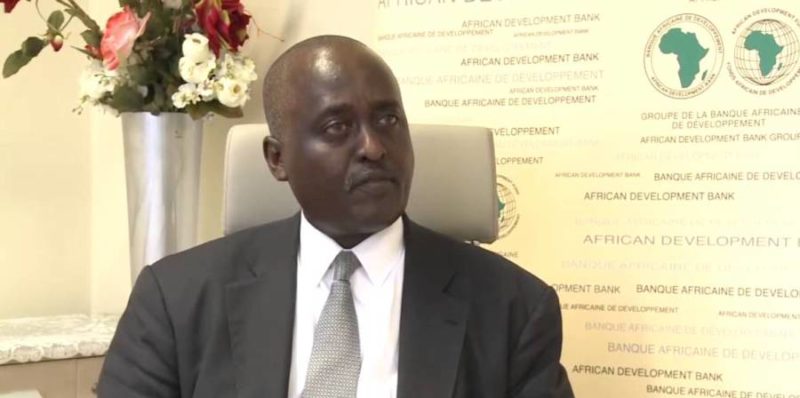Africa faces some of the most severe impacts of climate change globally for a long period of time despite the fact that it has contributed the least to the issue. It is unfortunate that a relatively little amount of global climate finance has entered the coffers of sub-Saharan African countries, especially the poorest nations in that region.

However, there has been a generally accepted opinion that the need to ensure that climate finance provision is adequate, sustainable, predictable, and urgent for it to meet the demands of developing countries.
In the same manner, there has been increasing calls to recipient-cum-developing countries to ensure that the climate funds if received will be put to a judicious, efficient, and effective use in order to achieve the objective of transformation and green development in sub-Saharan Africa and the developing world.
Now, a multitude of key players has been involved in channeling climate finance to the region, to help the countries adapt to drastic climate change impacts already existing and to support low-carbon development.
The Clean Technology Fund (CTF) administered by the World Bank and the Least Developed Countries Fund (LDCF) are the largest funders of climate change projects in the region. A total of $2.67 billion has been approved for more than 400 projects and programmes in the region since 2003, according to CFU.
The six biggest Multilateral Development Banks (MDBs) in the world namely, the European Investment Bank (EIB), the Inter-American Development Bank Group (IDBG), the African Development Bank (AfDB), the European Bank for Reconstruction and Development (EBRD), the World Bank Group (WBG), and the Asian Development Bank (ADB) have jointly mobilised the sum of $81 billion in 2015 as climate finance. Out of this amount, sub-Saharan African received only 9% of the total fund amounting to $7.29 billion.
Looking at the various regions of the world, Central Asia and the non-European Union (Europe) receive the lion share of the overall fund at 20%, followed by South Asia receiving 19% of the fund. Other regions receive the following amounts out of the overall fund: Caribbean and Latin America at 15%, the Pacific and East Asia at 14%, the European Union (EU) at 13%, sub-Saharan Africa at 9%, and North Africa and the Middle East at 9%, while multi-regional deals make up the remaining 2% of the total fund.
From the foregoing, it is obvious that current levels of climate funds directed to sub-Saharan African are probably not enough to meet the obvious needs of the region, especially for adaptation finance. Therefore, the most vulnerable group in the region has received little support in the long run.
The major obstacle to climate finance investment in the region has been the transaction costs of the micro-scale projects that are needed in the least-developed areas as well as the problem of designing and carrying out such projects in effective ways – financial viability and replicable ability.
Already, 20 climate funds are functioning in the region and the biggest contribution is coming from the Clean Technology Fund (CTF) which has approved $446 million to fund four big renewable energy projects domiciled in South Africa. The International Climate Initiative (ICI) of Germany, the International Climate and Forests Initiative (ICFI) of Norway and the International Climate Fund (ICF) of the UK have all invested in sub-Saharan Africa via their individual bilateral country climate finances.
Therefore, South Africa is the biggest recipient of climate finance in the region. It has received over 20% of funding approved since 2003 and the larger share of this fund has been channeled to Eskom Renewable Energy project.
Looking inward, Africa Development Bank (AfDB) has provided $905 million from her internal resources in 2015, in addition to $58 million of external resources to boost the region’s energy resources.
The bank has set ambitious goals for the key players in the industry to help ensure that Africa stands at the threshold of an exponential growth in clean energy access as well as benefit from an extensive increase in climate-friendly energy use and green development. This will assist the region in supporting innovative projects in solar, wind, geothermal, and water, noted Alex Rugamba, Chair of AfDB’s Climate Change Coordination Committee (CCCC).
Furthermore, the bank provided $305 million of her own resources and $91 million of external resources to support adaptation commitments and intensify the resilience of sub-Saharan Africa against climate change especially in forestry, agriculture and land use sectors.
Considering each sector, water, and waste water systems receive the biggest adaptation fund at 27% of the total amount, while other sectors followed suit as follow: energy, transportation and related infrastructure at 24%, crop, and food production at 18%. Renewable energy takes the bulk of mitigation finance at 30%, lower carbon transport at 26%, and energy efficiency commitments at 14%.
Looking into future, the Multilateral Development Banks (MDBs) will increase climate finance activities in many sectors, especially in:
- Renewable energy and energy efficiency
- Low carbon and climate resilient cities, regions, and industries
- Low carbon transportation
- Natural resource efficiency
- Climate-friendly agriculture and food security
These financial activities and efforts will assist countries to meet their objectives under the Paris Agreement, navigating them to a low carbon and more resilient future.
So, as the countries of the sub-Saharan African region work to put their development goals right with their committed Nationally Determined Contributions (NDCs) prescribed in the Paris Agreement, this focus on strengthened capacity in financial activities is an early indication to meeting these climate finance goals and an essential new area of engagement.
By Chikwendu Chizurum Henry
